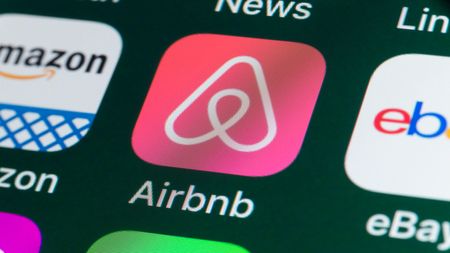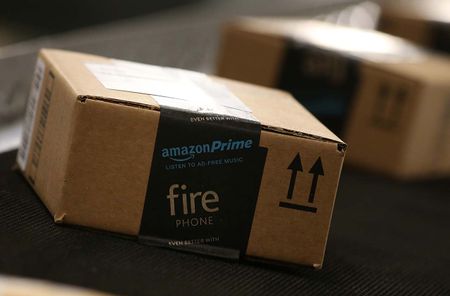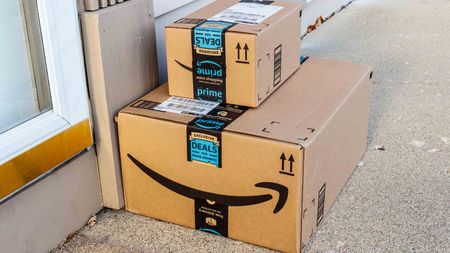Master the Modern Art of Haggling
From cars to TVs to patio pavers, learn the tricks of talking your way to a deal.
This is the story of how Elena Smonina haggled her way to $4,000 in savings on a home landscaping project. It begins with an admission: "Gardening was never my thing," says Smonina, a tax manager who lives in Milford, Conn. So she created a challenge for herself: Use 3,000 square feet worth of patio pavers to transform part of her lawn into a geometric wonderland, with raised plant beds for greenery.
"My husband thought I was crazy," she says. In August she visited her local Lowe's store and found pavers at just 30 cents each, marked down from $1.50. But only ten were left, so she started calling other Lowe's stores in her area. "Your other store has them on clearance," she'd say. "Why don't you?" Sometimes Smonina would remind the floor manager that it was the end of the season and he'd have to sell them sooner or later. If the floor manager wouldn't deal, she'd ask to speak to the store manager. Some stores had 100 pavers and some had 1,000, and by reaching the right person and pushing the right buttons, she discovered that they were all ready to deal.
Smonina used three tried-and-true haggling techniques to perfection, which we'll discuss in a bit. But the deck was already stacked in her favor because Lowe's had had two lousy years before she began her bargaining spree, and may just barely eclipse its prerecession sales this year. You have the same edge: The shaky economy and anemic retail spending have opened the haggling floodgates. And hard-pressed consumers smell blood.

Sign up for Kiplinger’s Free E-Newsletters
Profit and prosper with the best of expert advice on investing, taxes, retirement, personal finance and more - straight to your e-mail.
Profit and prosper with the best of expert advice - straight to your e-mail.
A poll in 2009 by Consumer Reports underscores the trend. It found that more than 66% of Americans had tried negotiating during a six-month period last year, and that most consumers who tried won discounts. But we're still far from a haggling society. The same poll found that only 28% of Americans say they haggle either always or often.
Smonina had the advantage of having grown up in a haggle-intensive culture -- in the former Soviet Union -- where she traveled to market with her grandmother and listened to her bargain for fruits and vegetables. But for many Americans, haggling is an unfamiliar and uncomfortable exercise. Haggling experts say the trick is to ease yourself into bargaining with easy targets and simple techniques.
Pick the low-hanging fruit
The first mistake that newbie hagglers make is to turn the negotiation into a contest of wills. Says Julie Parrish, haggling expert and chief executive of Coupon Girls: "You want to be sensitive to the fact that people need to make money."
To that end, the easiest strategy is to offer merchants a deal that benefits them. Parrish gives two examples of the negotiating power of offering to buy in bulk. She once asked a butcher at the end of a business day for a price break on bulk ground beef "so he wouldn't have to package it for the next day." He liked the idea and gave her a break, as did a clerk at a store who was wrestling with a big display of construction paper that was tough for shopping carts to maneuver around. Parrish said she'd buy a cartload to help her out. "You've got to make it a value proposition for them."
A retailer may be ready to offer a discount to customers who ask. That is, the purchase price listed on the store floor may be fungible, perhaps the highest of two or even three prices you could pay for the item. Traditionally, you tap the lower price by clipping coupons. But scoring the discount may be as simple as asking at checkout, "Do you have a coupon for this?"
One Kiplinger's reader reports waiting in line at a nursery to pay for an expensive load of shrubs when the customer in front of him popped that question. The clerk pulled a book of coupons from beneath the counter and swiped the bar code for the appropriate one. So our reader asked the same question, and those seven words saved him $35.
Other examples of low-hanging fruit: floor models (especially those with dings), seasonal items when the season is ending, and perishable items with a shelf life that's about to run out.
Rick Doble, coauthor of Cheaper: Insiders' Tips for Saving on Everything, says Americans often miss the most obvious cue that an item is primed for a discount: when it's on sale. Most people are just grateful to get the sale price. But Doble says that the sale is a signal that "the price is no longer fixed." Asking "Could you do any better?" often wins. Or you could ask when the item will next go on sale, then ask for the sale price now.
Getting a discount when you drop a wad of cash can also be easy. Buying a room full of furniture? Booking a cruise or travel package? Often a little nudge brings on a discount or garners some extras. If the seller wants to protect the purchase price, he may keep the price but throw in free end tables, free delivery or a free rental car.Doble says he always asks for, and usually gets, a room upgrade when booking a hotel. "I love the Internet and services like Priceline, but nothing beats calling a hotel and speaking to the manager," he says. "It's the local personnel who know how much wiggle room they have."
Another simple trick: Ask for a discount if you pay cash. This saves the store the cut it has to pay the credit-card company. According to TrueCostofCredit.com, for example, if you buy an $800 flat-screen TV at a big electronics retailer with an American Express card, your purchase costs the merchant $28. The site lists fees for various purchases using different types of credit cards.
Conduct a reverse auction
The ultimate leverage in negotiating comes when sellers compete to give you the lowest price. Our paver heroine Elena Smonina got a deal on her first new car, a Toyota Camry, by pitting one dealership against another. She didn't merely quote one dealer's price to another dealer -- she stood next to the salesman of one car she liked while she had a salesman from another dealership on the phone, playing them off one another.
A less dramatic way to work this haggling technique is to bring in one merchant's advertised price to a competitor and ask, "Can you do better?" Or show a salesperson at a brick-and-mortar store the lower price listed on its Web site. The salesperson probably won't undercut it, but she might match it, saving you the cost of delivery. Of course, the best products and services to bargain for are those provided by sworn enemies -- for instance, a market with two or three phone and cable providers that are constantly angling for your business and dissing the competition. Every time your contract is up or you see a rate hike on your bill, call the competitor and ask for a better price; then call your current provider and see if it will give you an even better deal.
Cop the right attitude
You may not have the chutzpah to try Smonina's dramatic tactics, which raises the question: What's the best attitude to bring to a negotiation? Should you display the steely resolve of someone negotiating nuclear-weapons disarmament, or the conciliatory tone of a hostage negotiator?
Herb Cohen knows. The professional negotiator helped the FBI develop its hostage-negotiation protocols and was involved in the START arms-control talks with the Soviet Union. He's also the author of You Can Negotiate Anything. Cohen says he started negotiating as an insurance claims adjuster and was successful because he admitted he didn't know anything. By asking for help from the claimant and others, he started negotiations collaboratively.
He negotiates for stuff the same way. His advice: "Always start cooperatively and amicably with a low-key pose of calculated incompetence." Make sure the seller knows you really like the item and that you're there to buy. "Help me make the deal," is his hook to get a lower price. And make sure you start negotiating with the right person -- someone with the authority to make a deal.
Your trump card, Cohen and others agree, is walking. But there's walking and there's walking. If you leave in a huff after frustrating negotiations have broken down, the salesperson will likely hold the door for you and bid you a not-so-fond adieu. But if you exit with regret, sad that you couldn't come to some agreement, you're giving the store one last opportunity to deal.
Sometimes, though, you should leave. Parrish warns that you need to avoid becoming emotionally attached to an item -- even though a good salesperson will try to weaken your resolve by letting you touch, taste, smell or use whatever it is you're interested in. "As a consumer you need to dissociate yourself from your emotions," she says. "After all, a car is just a car. They'll make more of them."
Drop the anchor
Haggling isn't all about the art of the deal. Psychology plays an important part, too. For example, we're often tethered to the first piece of information we hear, a phenomenon known as the anchoring bias. Transport this phenomenon to a car lot. The moment the salesperson points to the sticker price and starts negotiating, you've been anchored. Your brain is now using that figure -- inflated by preparation fees, documentation fees, delivery fees and the like -- as the starting point.
You beat dealers at their own game when you drop your own anchor. With car-buying, the key is finding the real cost of the vehicle to the dealer before you enter the negotiating arena (see kiplinger.com/links/dealercost). Bring a printout from the service you've used to find the dealer cost so the salesperson knows you're not blowing smoke.Another trap we fall into is not bidding far enough below the maximum we're willing to pay. Professors Richard Larrick, of Duke University's Fuqua School of Business, and George Wu, of the University of Chicago's Booth School of Business, discovered in a study that even when we think we've bargained for the best possible deal, we probably paid too much.
Says Larrick: "People often focus on their bottom-line price, and move just a little below that. This leads us not to be ambitious enough bargainers." The rule of thumb, Larrick says, is to make an opening bid significantly below your limit, without being insulting. A more valuable rule of thumb is the power of the halfway point, he says. "The best predictor of where a negotiation will end is the midpoint between the parties' first two offers." The likely reason for this, Larrick says, is that "you keep moving toward that halfway point, and it kind of feels fair." Bottom line: Be aware when you open the bidding where it's likely to end up.
Get Kiplinger Today newsletter — free
Profit and prosper with the best of Kiplinger's advice on investing, taxes, retirement, personal finance and much more. Delivered daily. Enter your email in the box and click Sign Me Up.

-
 Stock Market Today: Dow Dives 1,679 Points on Trump Tariff Shock
Stock Market Today: Dow Dives 1,679 Points on Trump Tariff ShockU.S. stocks lost roughly $3.1 trillion in market cap on Thursday – the biggest one-day decline since the start of the COVID-19 pandemic in March 2020.
By Karee Venema Published
-
 Did Florida’s Chance at $1,000 in Property Tax Rebates Vanish?
Did Florida’s Chance at $1,000 in Property Tax Rebates Vanish?State Taxes The Florida Legislature bypassed Gov. Ron DeSantis’ wish to cut property taxes and instead voted to lower the state’s sales tax.
By Gabriella Cruz-Martínez Published
-
 Roth IRA Contribution Limits for 2025
Roth IRA Contribution Limits for 2025Roth IRAs Roth IRA contribution limits have gone up. Here's what you need to know.
By Jackie Stewart Last updated
-
 How to Find Foreclosed Homes: Best Foreclosure Listings Sites
How to Find Foreclosed Homes: Best Foreclosure Listings SitesMaking Your Money Last Find foreclosed homes for sale on these foreclosure listing websites. Search for properties on these free, paid or government sites.
By Bob Niedt Last updated
-
 Luxury Home Prices Rise as the Rich Dodge High Mortgage Rates
Luxury Home Prices Rise as the Rich Dodge High Mortgage RatesLuxury home prices rose 9% to the highest third-quarter level on record, Redfin reports, growing nearly three times faster than non-luxury prices.
By Kathryn Pomroy Published
-
 Four Tips for Renting Out Your Home on Airbnb
Four Tips for Renting Out Your Home on Airbnbreal estate Here's what you should know before listing your home on Airbnb.
By Miriam Cross Published
-
 Five Ways to a Cheap Last-Minute Vacation
Five Ways to a Cheap Last-Minute VacationTravel It is possible to pull off a cheap last-minute vacation. Here are some tips to make it happen.
By Vaishali Varu Last updated
-
 How to Figure Out How Much Life Insurance You Need
How to Figure Out How Much Life Insurance You Needinsurance Instead of relying on rules of thumb, you’re better off taking a systematic approach to figuring your life insurance needs.
By Kimberly Lankford Last updated
-
 Five Reasons You Shouldn't Shop on Amazon Prime Day
Five Reasons You Shouldn't Shop on Amazon Prime DaySmart Buying Think twice before getting lured into buying a bunch of stuff you don't need just because it's on sale.
By Andrea Browne Taylor Last updated
-
 Amazon Big Deal Days Is Coming! We’ve Got All the Details
Amazon Big Deal Days Is Coming! We’ve Got All the DetailsAmazon Prime To kick off the holiday season with a bang, Amazon Big Deal Days runs Tuesday, October 8 and Wednesday, October 9.
By Bob Niedt Last updated
